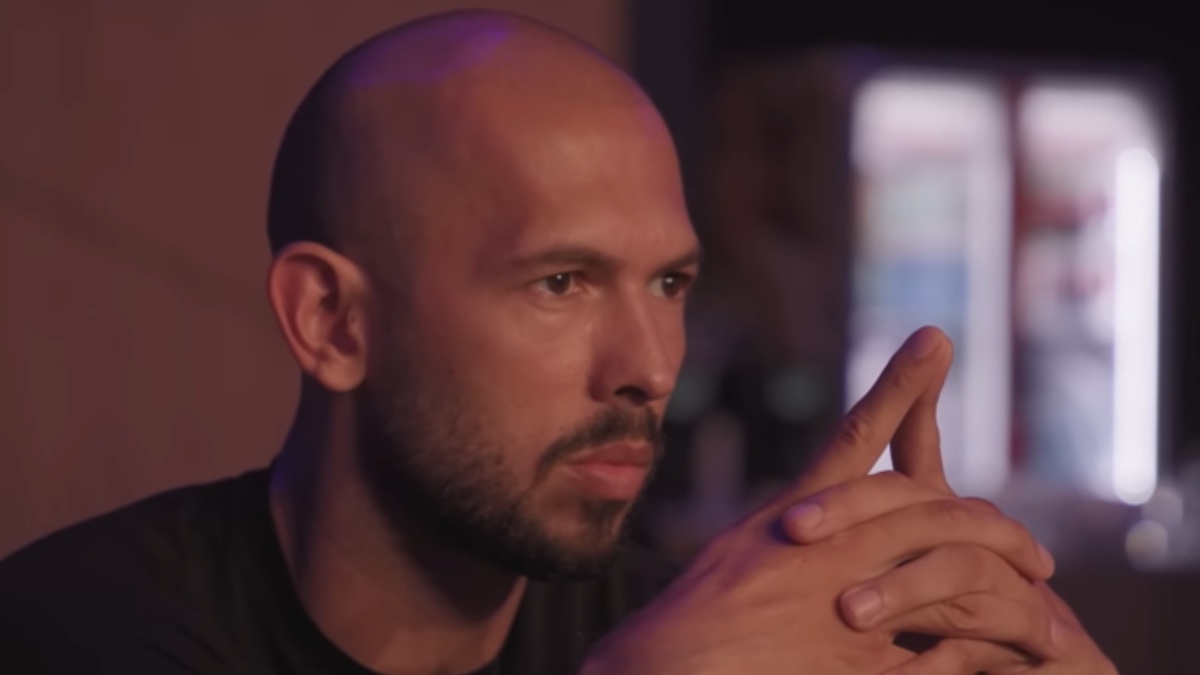Several months after YouTube banned Andrew Tate from their platform, an investigation by Sky News revealed that YouTube nevertheless promoted the thought-to-be-banned influencer, and perhaps erroneously, helped his popularity grow.
Many people have pointed out that since Andrew Tate was banned from the Tube (that’s YouTube, not your grandpa’s TV — though Tate is likely banned from there also), his videos have been just as popular on the platform, if not more, as they were before the ban — mainly via Tate’s clips being shared on many different accounts run by users who are not necessarily affiliated with Andrew Tate. Those users, most of whom are fans of Tate, benefit greatly by sharing these videos — which they mostly download from other platforms, including Tate’s own website — because they generate a high view count, which helps YouTubers earn more income from the platform. Others benefit because even if they don’t run ads on the videos — which YouTube Shorts doesn’t allow — they can still gain subscribers.
Sky News’ investigation reveals that despite YouTube’s ban, by allowing his videos to continue being shown on the platform by other users, the door could be opened by Tate himself under the guise of another user; no one would actually know (though we’re not at all suggesting it his scenario to be the case).
Sky News set up fake accounts on multiple platforms and pretended to be a 13-year old boy. Despite not seeking out Andrew Tate content, the “boy” was served 30 different Andrew Tate videos within the first two hours of using social media, covering YouTube and Instagram. The investigation also included TikTok but found that no Tate videos were offered to the user at all on TikTok, an irony not lost on those following the ongoing news of that platform.
A 13-year old being fed an Andrew Tate video every four minutes, on average, on platforms that have banned him proves how ineffective such social media bans are, especially when they involve someone as popular as Tate, who was one of the most searched-for people on Google last year. It’s nearly impossible to count how many users will share an Andrew Tate video, but it’s also puzzling as to why such platforms do not change their own algorithms.
Obviously, those algorithms work partly in a way that will promote the most popular videos that it thinks you would like. A creator, especially on YouTube, has some ability to choose what type of videos they are uploading, and whether it’s meant for children. YouTube relies too much on what the user claims, but also fails to react to names that are banned. Hence why someone can write “Andrew Tate” in their video title, and the video can be uploaded with no issues.
The investigation found that, on YouTube, the most common Tate clips appeared on YouTube Shorts — a series of quick videos shown to the user. Although Sky News emphasizes that they did seek out Andrew Tate videos, it’s important to point out that they appear to watch the video when presented, which means that YouTube will then suggest you watch other Andrew Tate videos.
The YouTube videos shown to what the platform believed was a 13-year old boy included Andrew Tate discussing how to manipulate women with money. Perhaps the worst video was one of him detailing how he threw out one of his female workers from his webcam-sex business, adding that he threw her clothes out of the window, and refused to pay her.
Sky News concluded that the videos that they were shown came from 19 different accounts, with most of those being accounts being completely dedicated to Tate videos. The view count on most of the videos exceeded one million, with some gaining as many as 20 million views. Surely, YouTube can’t play dumb and claim to be unaware? (Keep in mind, YouTube generates revenue from these accounts).
Sky News then contacted YouTube, which reacted by shutting down about half of the accounts, saying through a spokesperson, “We’ve terminated channels associated with Andrew Tate for multiple violations of our community guidelines and terms of service, including our hate speech.”
The investigation brings into question why YouTube, who has come under fire for banning creators without explanation who appear not to have violated a single policy, seems to ignore the preponderance of Andrew Tate content on their platform, especially after claiming they have banned it. It took Sky News two hours to uncover 19 accounts that violated YouTube’s policy, which means YouTube likely has no one reviewing users’ videos.
It also suggests they have done nothing to adjust their algorithms to exclude Andrew Tate content, let alone restrict its wide availability to 13-year olds.

